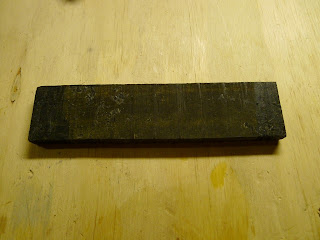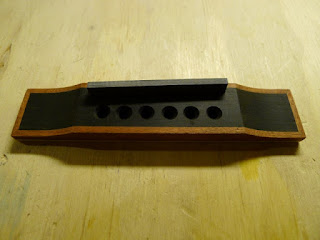A big and sometimes frustrating part of luthery is building jigs. Here are three, a very simple one for marking the position of the bridge pin holes. one for routing the saddle slot into the bridge and one for routing the binding channels..
The keen eyed among you will know that I already made a jig for this based on the KMG guitars design. Well this one is similar but I hope an improvement that will work a bit better for me..
.JPG) |
| Very Simple Jig |
.JPG) |
| Bridge is just clamped in and the position of the holes can be marked with and awl |
.JPG) |
| Bridge is held in place while saddle slot is routed |
.JPG) |
| guitar side references on the guide |
.JPG) |
| This is similar to some production jigs I've seen and a static version of Charles Fox's I believe |
A big part of luthery is getting the process set up how YOU like it. There are many ways do do each step none of them wrong you just need to find the one that works best for you and finding the right method to route binding channels and do it in a shop with very limited space has been a challenge.
.JPG)
.JPG)
.JPG)
.JPG)
.JPG)

.JPG)
.JPG)
.JPG)
.JPG)
.JPG)
.JPG)
.JPG)
.JPG)